15 Easy Indoor Plants for Beginners
Grow beautiful, lush houseplants with minimal effort
Check here to see if The Home Depot® or your Local Garden Center is carrying leafjoy®.
Order leafjoy plants online: Shop Now
Houseplants add a living touch to indoor decor, helping to cleanse the air and lift the spirits. Even if you don’t have a green thumb, you can still become a good plant parent by choosing easy houseplant varieties.
All plants need light, water and nutrients to survive. Those needs can vary widely depending on the type of plant. Houseplants will perform best when grown in conditions that closely mimic their native habitat. Some varieties are more forgiving than others, making them more suitable for beginners.
By starting out with houseplants that are easy to care for, you can be well on your way to a stunning collection of lush indoor greenery. Here are some of the best houseplants for beginners.
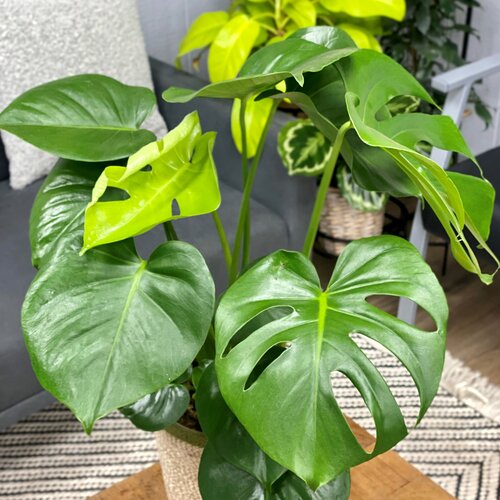 1. MONSTERAMonstera spp. Also known as Swiss cheese plant or split-leaf philodendron, these popular indoor plants are revered for the bold heart-shaped green leaves that develop vertical holes and slits as they mature. These climbing tropical plants, which can be trained on a moss pole or other support, are easy houseplants to grow when provided regular water and a humid environment. Pictured: Mysteria™ Deliciosa |
 2. SPIDER PLANTChlorophytum comosum Spider plant is characterized by its grass-like cascading green or variegated foliage. Mature plants send out long arching stems that produce white star-shaped flowers and baby plants resembling spiders that can be snipped off to create new plants. Spider plant is easy to grow and great for beginners, performing best with higher humidity and bright indirect light. Pictured: Urban Arches™ Pixie Punk™ |
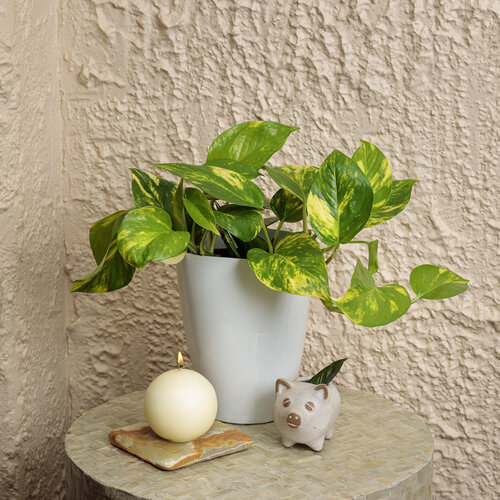 3. POTHOSEpipremnum spp. This philodendron look-alike produces heart-shaped green, yellow or variegated leaves. These trailing plants are quick growers and can easily be rooted from stem cuttings to produce new plants. Pothos are easy plants to grow inside and are tolerant of different humidity and light conditions. Avoid placing in direct sunlight, which can burn the leaves. Pictured: Beautifall® Summer Nights™ |
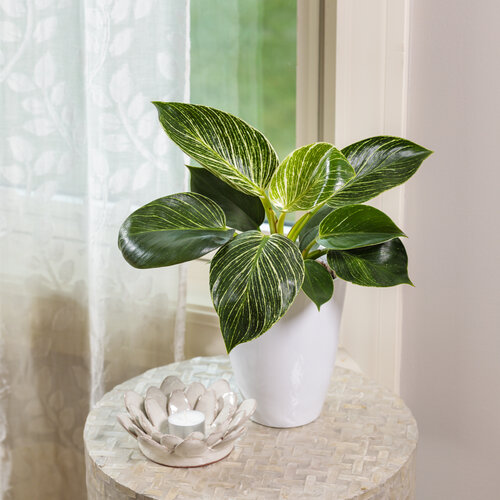 4. PHILODENDRONPhilodendron spp. Philodendron, which is native to tropical rainforests, comes in a dazzling array of colors, sizes, forms and leaf shapes to complement any style of home decor. These easy-care indoor plants come in compact or vining forms. Allow plants to trail down the side of containers, grow up a trellis, or train around windows. Provide well-draining soil, moderate water and high humidity. Learn more about growing philodendron. Pictured: Prismacolor™ Birkin |
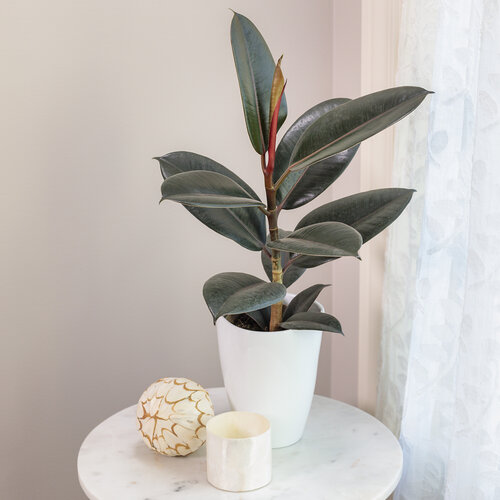 5. RUBBER PLANTFicus elastica Rubber plant, named for the milky sap that is used to make rubber, has an upright growth habit and large, thick oval leaves in shades of green, burgundy or variegated patterns, some with colorful stems and new growth. Native to southeast Asia, this tropical requires evenly moist soil, moderate humidity and regular fertilizer in order to thrive. Plants are sensitive to drafts and sudden temperature changes. Pictured: Chroma® Abidjan Learn more about growing ficus plants. |
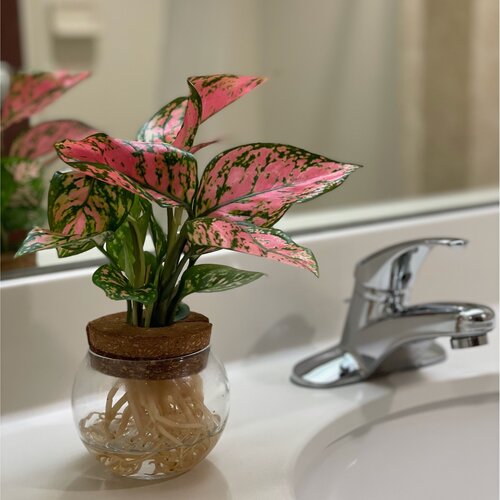 6. CHINESE EVERGREENAglaonema commutatum Also known as Chinese evergreen, this tropical houseplant comes in an array of vibrant leaf hues and patterns, adding bright splashes of color to indoor living spaces. Plants are slow growing and stay compact, making them suitable for displaying on end tables, bookshelves and small spaces. Place these easy care houseplants in a warm spot with high humidity such as a kitchen or bathroom, providing well-draining soil and moderate water. Pictured: Igneous™ Ruby Crab™ |
 7. PRAYER PLANTCalathea spp. Named for the leaves that fold up at night, resembling praying hands, this vibrant tropical plant comes in many leaf shapes, hues and patterns. Prayer plants are easy indoor plants to grow when given the right growing conditions. Place in a draft-free room with bright indirect light and high humidity, such as a bathroom or kitchen. Provide regular water and fertilizer. Pictured: Color Full® Freddie |
 8. CRASSULACrassula spp. Crassula is a large genus of succulents, with varieties in a wide range of shapes, sizes and colors. One of the most popular crassulas to grow is jade plant. This fleshy-leafed houseplant, which can be grown outside during warmer months, prefers bright light, low humidity, and little fertilizer or water, making it virtually carefree when placed near a south or west-facing window. Pictured: Mirage™ Pretty in Pewter™ |
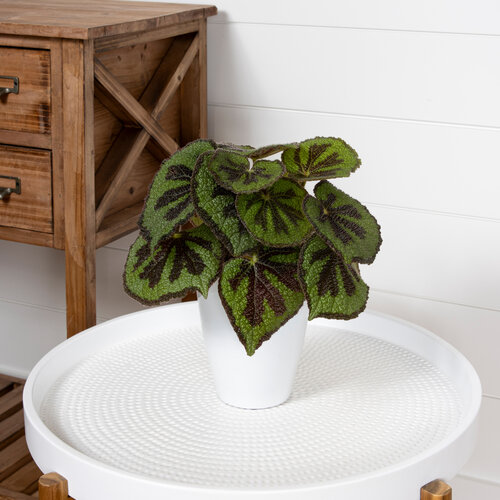 9. BEGONIABegonia masoniana Begonias are the perfect pick for houseplant enthusiasts seeking ease and beauty. Give them consistent conditions when it comes to watering, temperature, and light and you'll be rewarded with captivating lush foliage. Begonias gracefully enhance any indoor space, making them a popualr choice for either seasoned or novice plant parents. Pictured: Bold Belles™ Criss Cross™ Learn more about growing begonias. |
 10. NERVE PLANTFittonia albivenis Nerve plant, which is sometimes confused with polka dot plant, is distinguished by the distinct white, pink or red leaf veining and creeping habit. This tropical plant grows best in moist, well-draining soil, and needs a high humidity environment such as a terrarium. Avoid direct sunlight, which can burn the leaves. Pictured: Network News™ World Views™ |
 11. PEPEROMIAPeperomia spp. Peperomia is a large genus of tropical plants with colorful leaves and an upright, mounding or trailing habit. This easy-care beginner plant thrives in well-draining soil, warm temperatures and medium to high humidity. Allow soil to dry out between waterings and avoid overwatering, which can lead to root rot. To retain vibrant foliage coloring, place in spot with medium to bright indirect light. Pictured: Savory Delights™ Sweet and Sour™ |
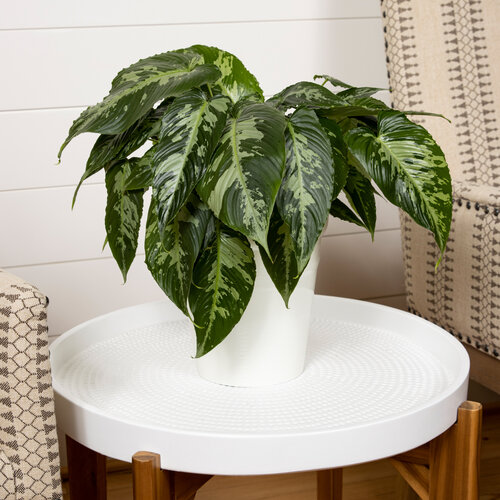 12. DROP TONGUE PLANTSchismatoglottis wallichii Also known as green shield, this unusual aroid is coveted by avid houseplant enthusiasts for the striking variegated leaves that can reach 18 inches long. Native to southeast Asia, this slow grower prefers regular water and high humidity. The tendency to wilt when plants begin to dry out can be instructive to beginners, serving as a reminder to check on other houseplants. Avoid direct sunlight and cold drafts. Pictured: Art Deco™ Rivera™ |
 13. ARROWHEAD VINESyngonium podophyllum Arrowhead vine produces distinctly arrow-shaped leaves in a range of colors including green, chartreuse, pink, white and variegated patterns. Plants are upright and compact, developing a trailing habit as they mature. This easy-to-grow houseplant prefers high humidity and evenly moist soil. Allow soil to dry out in between waterings, and avoid overwatering to prevent root rot. Pictured: Falling Arrows® Ruby Reign™ |
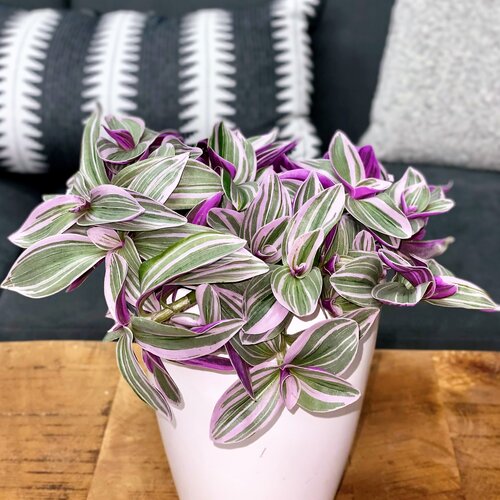 14. PURPLE TRADESCANTIATradescantia spp. Purple spiderwort can be grown indoors as a houseplant or outdoors during warmer months. This trailing tropical plant is grown for the lance-shaped foliage that comes in an array of colors including green, purple, pink or variegated. Plants are tolerant of different levels of light, water and humidity, making purple spiderwort suitable for beginners. Pictured: New Vogue™ Feeling Flirty™ |
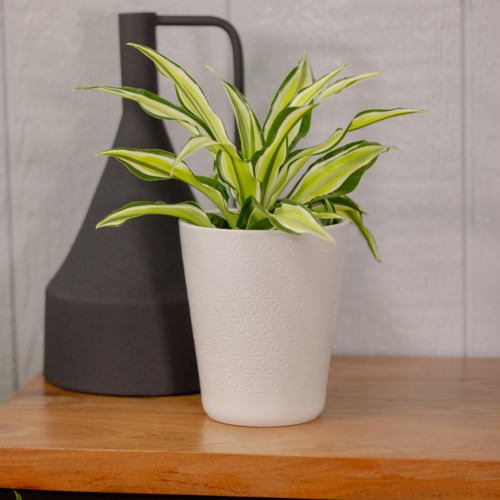 15. DRACAENADracaena spp. This attractive spiky plant has an upright habit, producing strappy foliage in colors of green, burgundy, red or variegated. Dracaena can be grown indoors as a houseplant or outside during warmer months. Plants are forgiving of a range of light and watering conditions and require little or no fertilizer, making it a good houseplant choice for beginners. Pictured: Submerged Relics™ Urban Urchin™ |
FAQ’S
What are the easiest plants to keep alive inside?
Plants that are less finicky and more forgiving of different growing conditions are the easiest plants to keep alive. Choose plants that are more tolerant of different light, temperatures, humidity and watering needs.
What is a good starter houseplant?
There are many indoor houseplants such as pothos, philodendron, zz plant and snake plant that are easy to grow. Pothos is especially hard to kill and very forgiving of inconsistent watering.
How many houseplants should I start with?
Evaluate your home’s growing conditions before buying indoor houseplants to find out what types of plants will do best in your home. Start out with one or two plants and see how well they do before adding more.




